Dog Sleeping Positions & What They Mean
Is it good or bad when your dog sleeps with all their paws in the air? Some dog sleeping positions and behaviors can be perturbing, so here are several of the most common sleeping positions and what they might mean about your dog.

Dogs are interesting and adorable creatures. If you live with one or more dogs, you are provided with ample opportunities not only to admire your pup, but to ask yourself why your dog does what it does, studying their behavioral patterns over time. When discovering your dog's personality, one common curiosity is the many unusual sleeping positions dogs seem to use and what, if anything, can be surmised about your dog's behavior or personality based on their choice of sleeping position. While it can be hard to know for sure, there are a few conjectures we can make based on some of the most common sleeping positions dogs use. Here are some of the more interesting dog sleeping positions and behaviors, and what they might be able to tell you about your dog's personality.
On Their Side
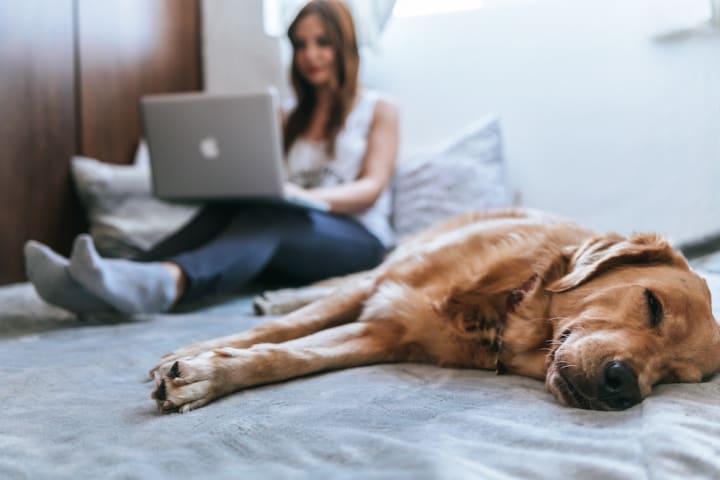
One of the most common sleeping positions dogs use is simply laying on their side. This is a very relaxed position, though it is more often than not reserved just for naps rather than extended periods of sleep. Like some other positions on this list, this position represents that the dog trusts its owner, and is comfortable in its surroundings. When sleeping on its side, the dog is slightly exposing its belly, which of course houses its vital organs. If your dog is sleeping on his or her side, you can bet that the dog is happy and care-free in its home.
The Belly Curl
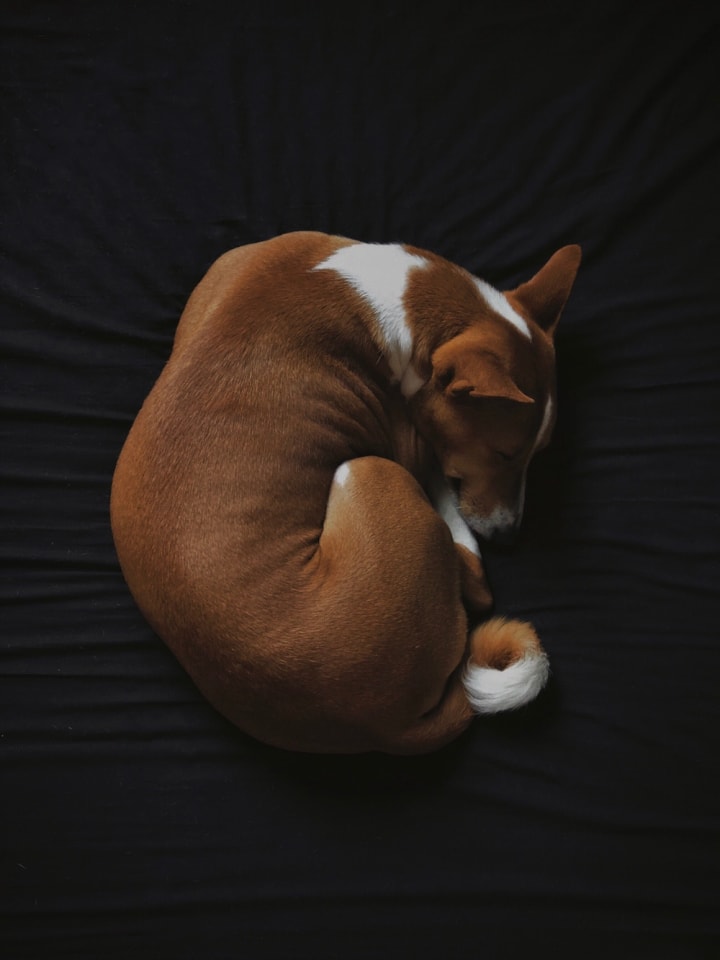
The belly curl is what you call it when your dog is laying mostly on their belly with their face buried in the ground and their legs curled up. The front paws may often be tucked in under their body. This sleeping position can be a cause for some minor concern, as it tenses up your dog's muscles in such a way that doesn't allow for good quality sleep. Personality-wise, this is a favored position of shy dogs.
Sploot
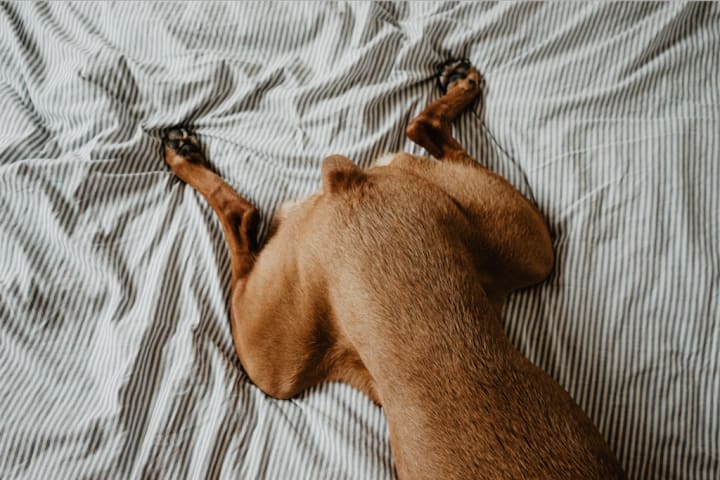
"Sploot" is a type of stretch that some dogs like to do by spreading their hind legs in the most adorable manner imaginable. A dog sleeping on their belly with their legs stretched in the sploot position is often energetic and playful, as this position allows for a quick transition into running around and playing as soon as they wake up! For this reason, the sploot is an especially popular sleeping position for puppies and other young dogs.
Dozing Off
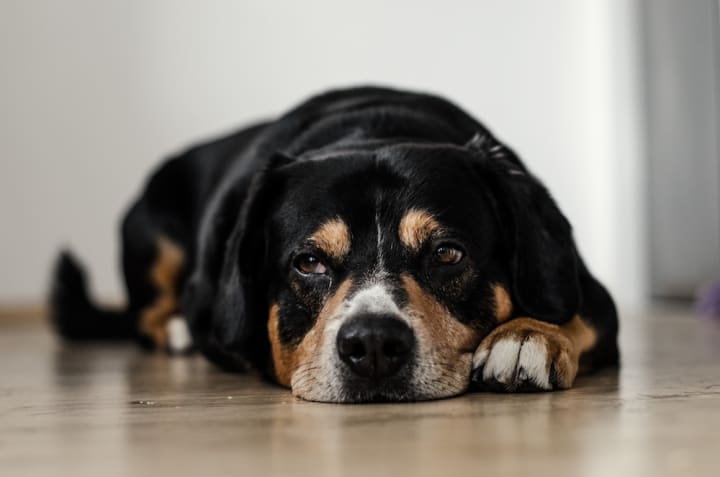
The "old dog" version of the sploot, dozing off is what happens when your dog is too tired to keep playing, simply laying down on their belly in the middle of the ground, trying, and failing, to keep their eyes open. While older dogs are more prone to this sleeping position, any dog of any age can eventually become tired. It is almost always a sign of a happy dog when you see them dozing off, as it means they are playing to the extent of their abilities and getting healthy exercise.
Curled Up
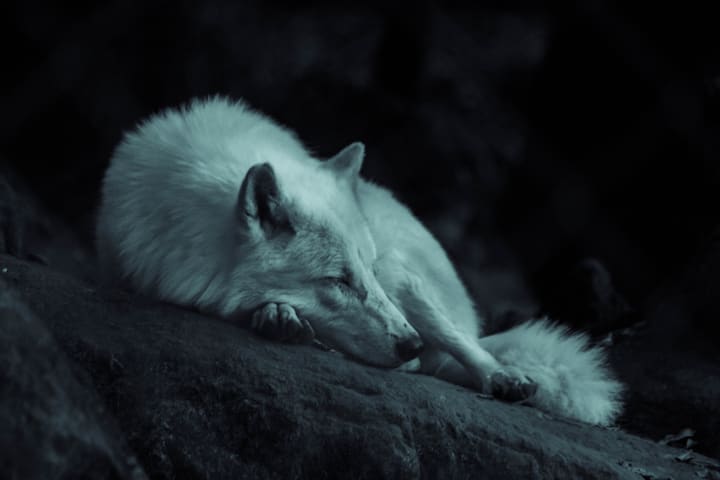
Curling up is a natural sleeping position for wild dogs and wolves, as it allows them to protect their belly and vital organs. If your dog is sleeping in this position, it can potentially mean they are apprehensive about something. For this reason, you may see your pup sleeping like this if you have strange visitors to your house or after a recent move. Curling up is not always a definite sign your dog is apprehensive, however. It can be instinctive, and is one of the most common sleeping positions for dogs representing any array of emotions. Your happy, healthy pup may simply be sleeping in this position for warmth and comfort.
Crazy Legs

One of the cutest dog sleeping positions ever, the "Crazy Legs" position, is when your dog is laying on their back with their arms and legs stretched out in front of them. The important thing to notice about this sleeping position is how exposed your dog's belly is when they sleep this way. The belly houses the dog's vital organs, and is one of their most vulnerable body parts. If your dog has their legs in the air like this, it's a sign that they trust you and feel very comfortable in their home. This is because a dog that is not 100% comfortable will protect its belly rather than put it on display.
Legs Up
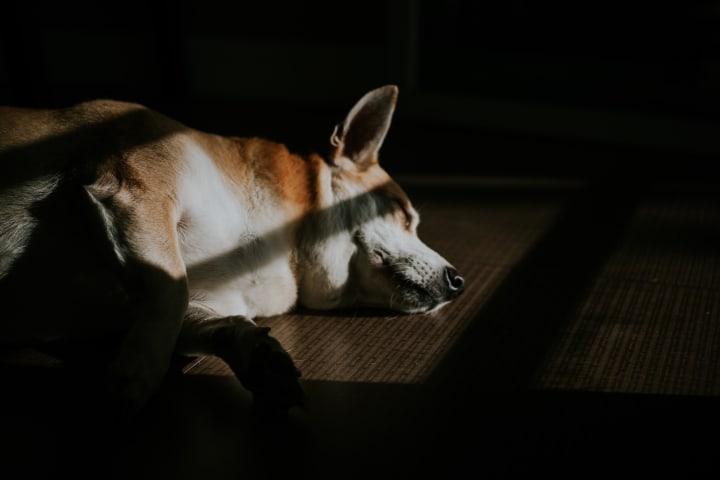
Similar to the "crazy legs" position, your dog may sleep with their legs in the air when sleeping on their side or back. This position is common in well-heated homes, as well as during the summer months. This is because the position is used when the dog is trying to cool down. A dog's paws contain many sweat glands, and the belly is typically the area with the least amount of fur. By exposing these body parts to the air, this position is very effective at allowing the dog to cool down. Unlike the crazy legs position, however, a dog sleeping like these is typically not interested in interacting with anyone. If you see your dog trying to sleep like this, you should probably wait until they cool off before trying to play with them.
In a Pair
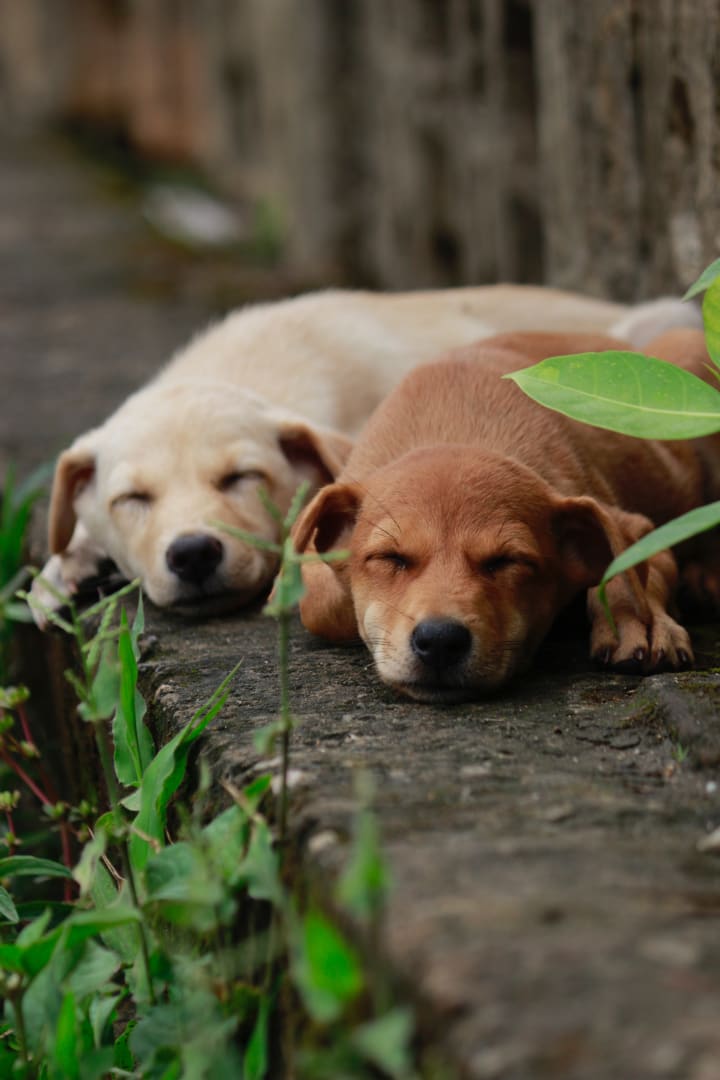
If your dog is sleeping closely up against another dog, it is first and foremost a strong sign you actually have two dogs. Sleeping side to side or back to back is an instinctive position for many animals, as huddling together provides protection as well as additional warmth from shared body heat. This is one of the more common positions dogs sleep in for this reason. Even if you only have one dog, they will likely cuddle up against you for the same reason.
Twitchy
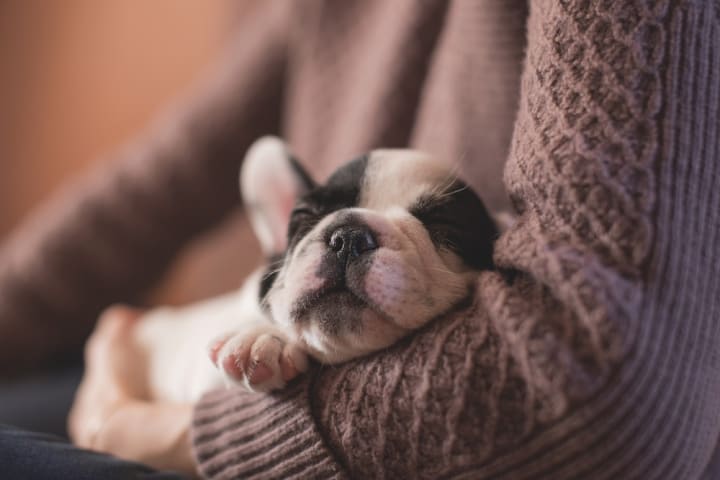
You may be alarmed the first time you hear your dog make little vocalizations in his or her sleep. You may even notice your dog twitching or faux-running when they otherwise appear to be completely sedated. There is, however, absolutely no cause for panic. This may come as a surprise, but dogs are actually extremely similar to humans! Just like a human may talk in their sleep or move around, a dog will do the same. This is especially common during the REM phase of the sleep cycle. This is when most dreaming occurs, so your dog may be dreaming of chasing after a squirrel or playing in the park when they twitch in their sleep. If they are being bothersome, you may simply wake them up by calling their name.
Under the Covers

If your answer is a firm, "Yes," to the question, "Should my dog sleep on my bed with me?" then you may have noticed they are taking up some, most, or none of your blankets. According to dog experts, this behavior may simply be just that: a personal preference. Some dogs, like dachshunds, were bred to burrow, and may have an instinctual inclination to "burrow" under the covers. Other dogs may not be interested in being swaddled. The dog's preferences may change over time or between the seasons (who doesn't love a big heavy blanket during the winter months?), but blanket preference probably does not have a strong correlation to dog sleeping positions, health, or personality.
About the Creator
Joseph D. N. Kendrick
Writer of words. Haver of cats. joeykendrick.com






Comments
There are no comments for this story
Be the first to respond and start the conversation.